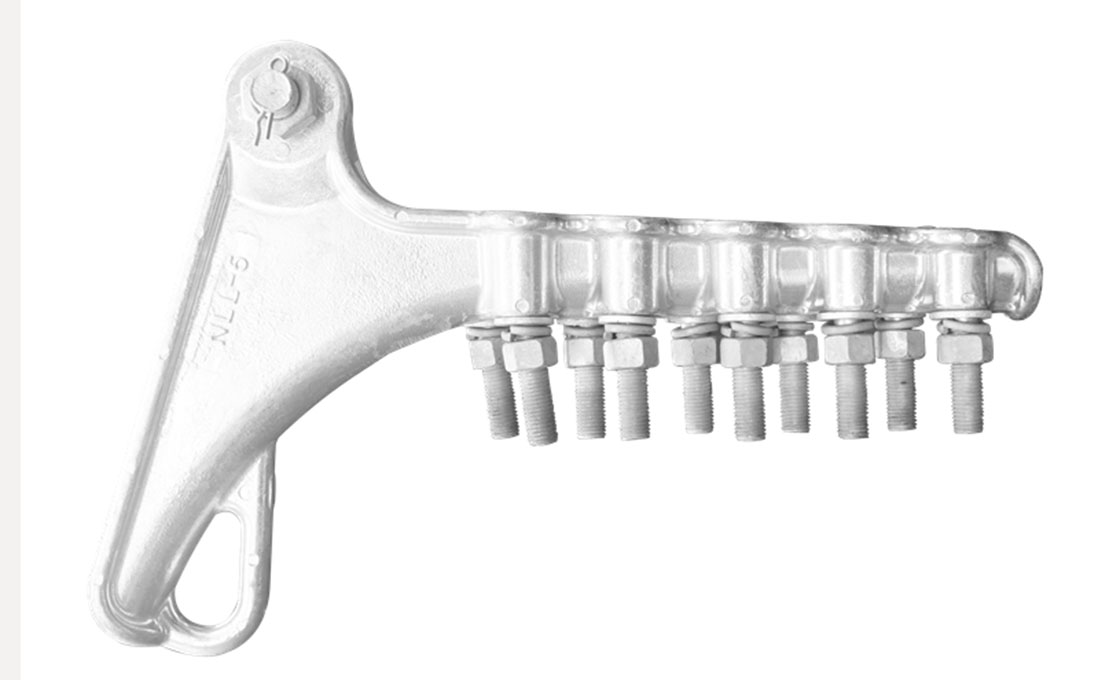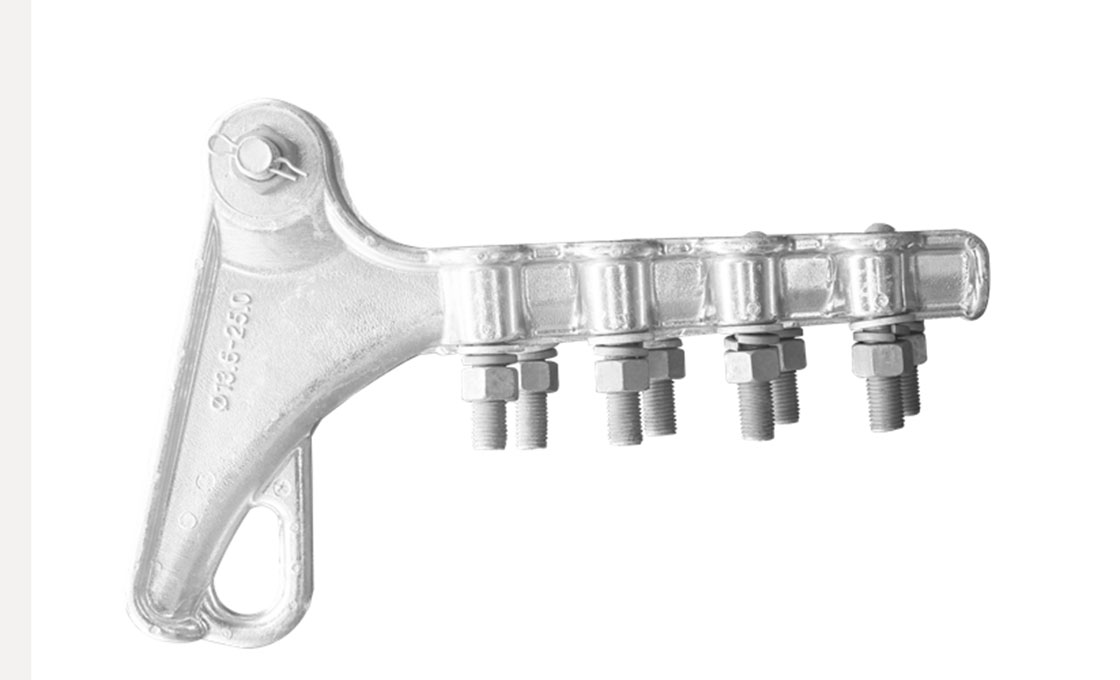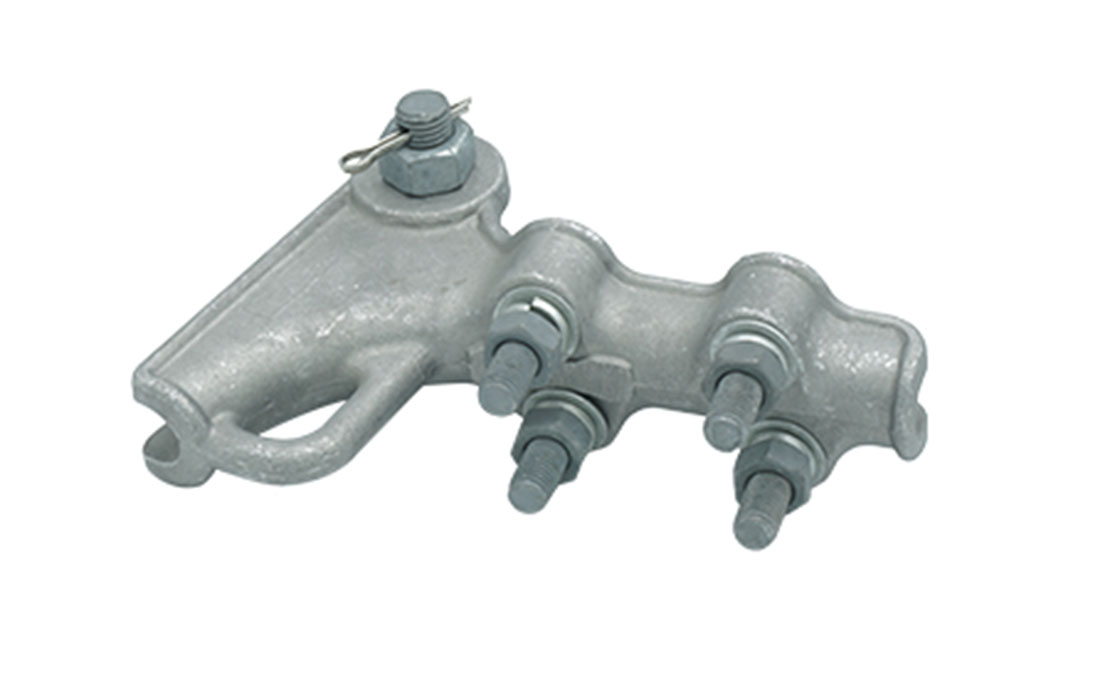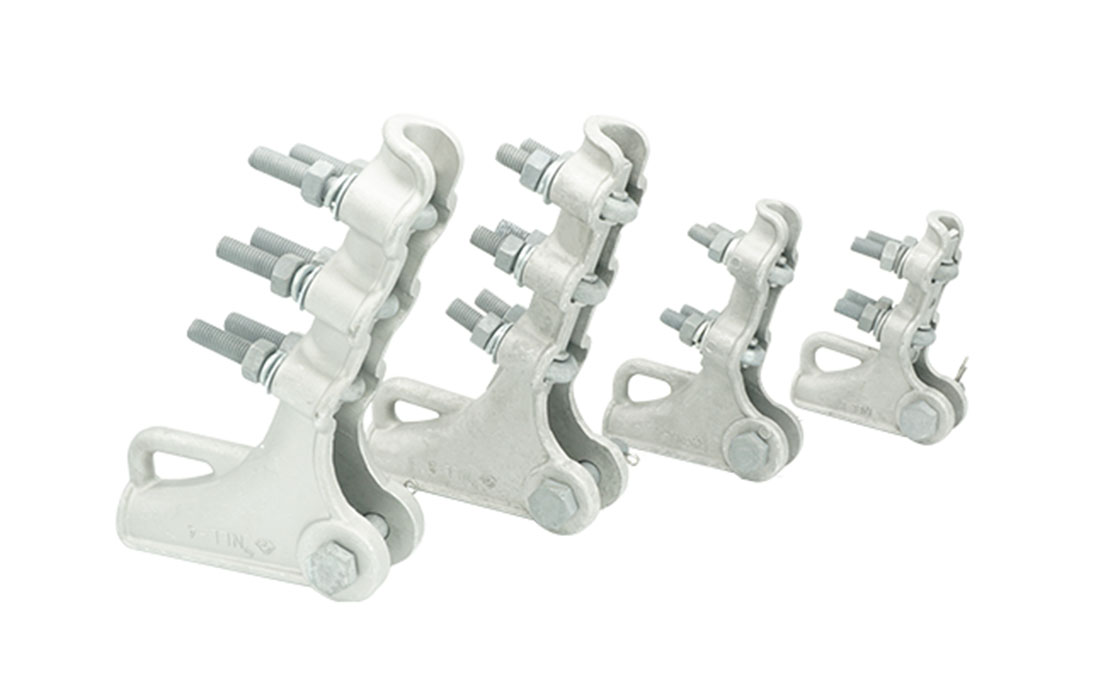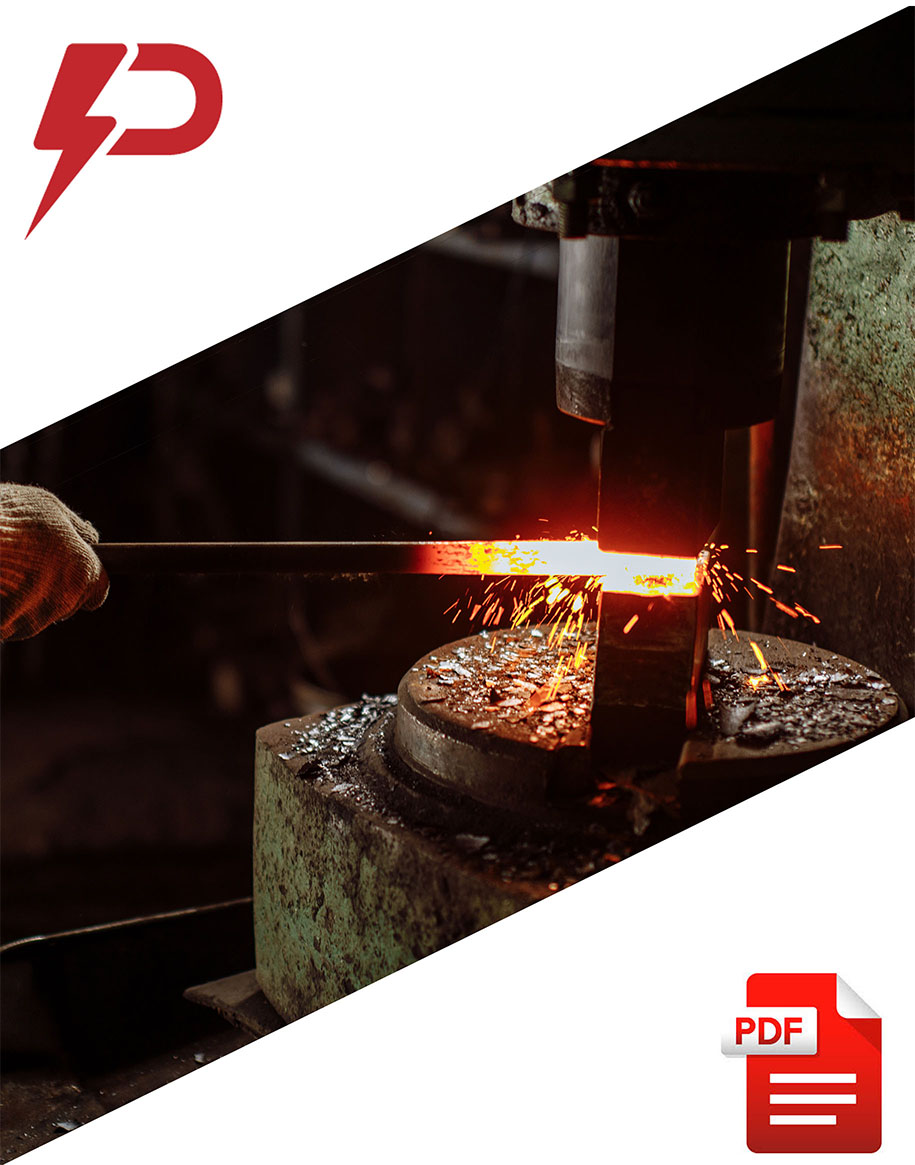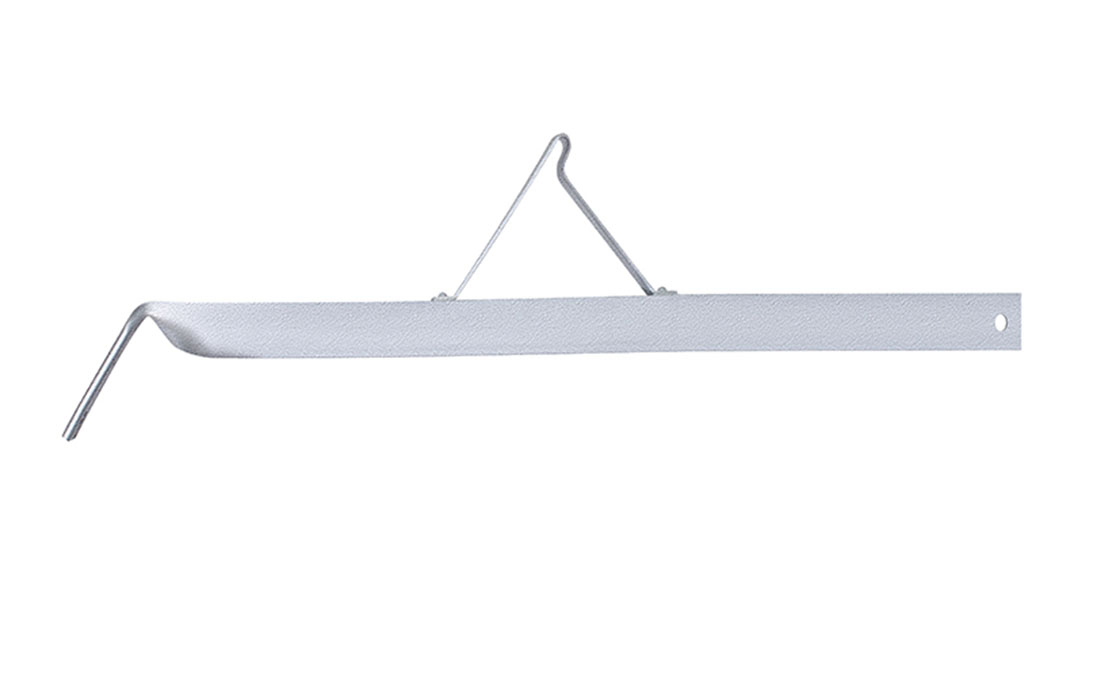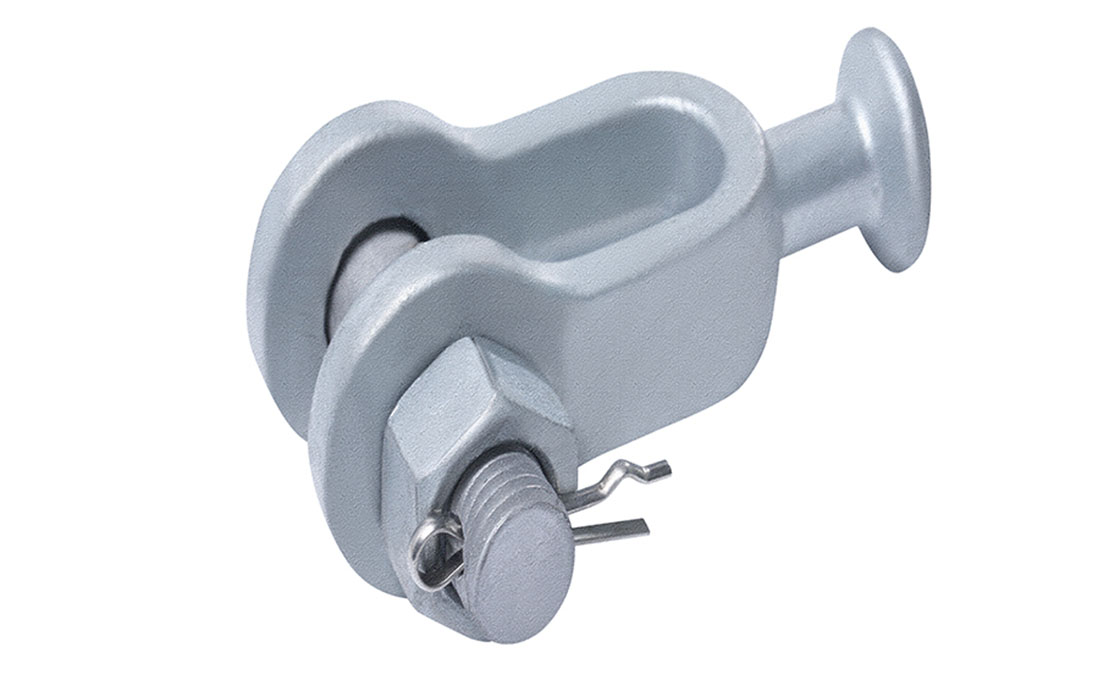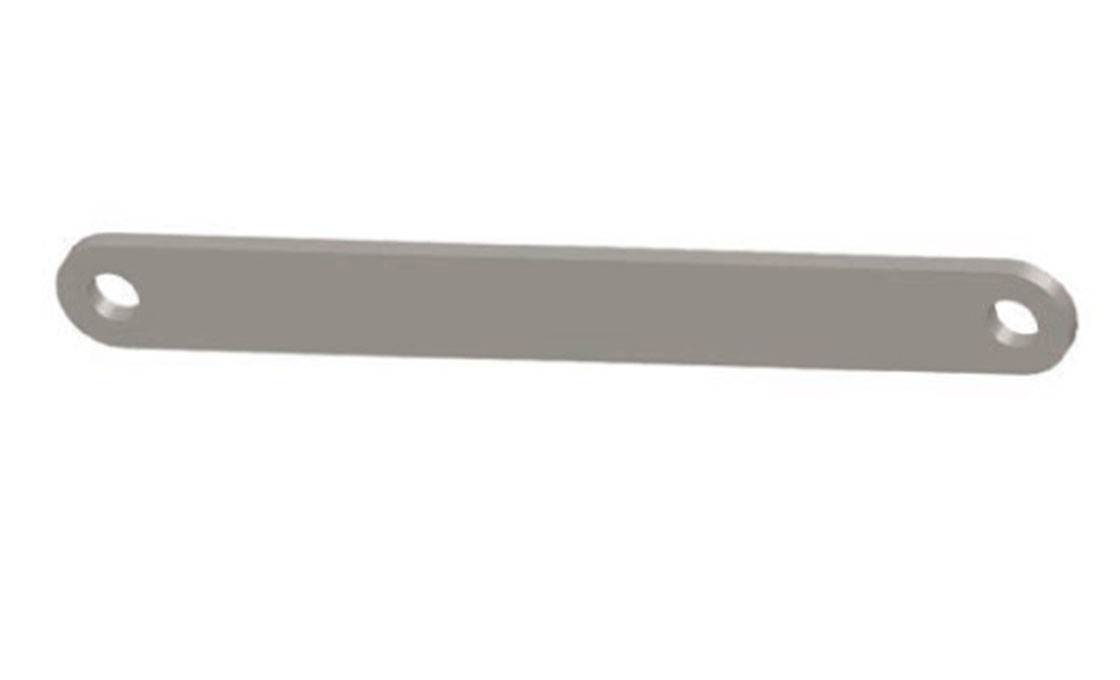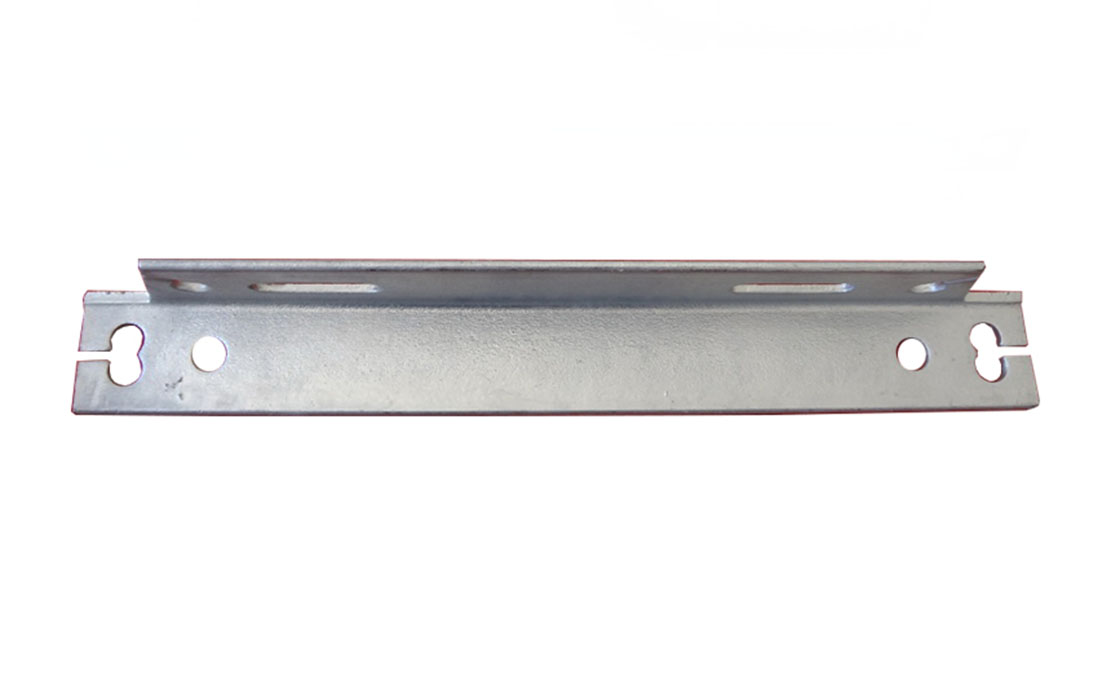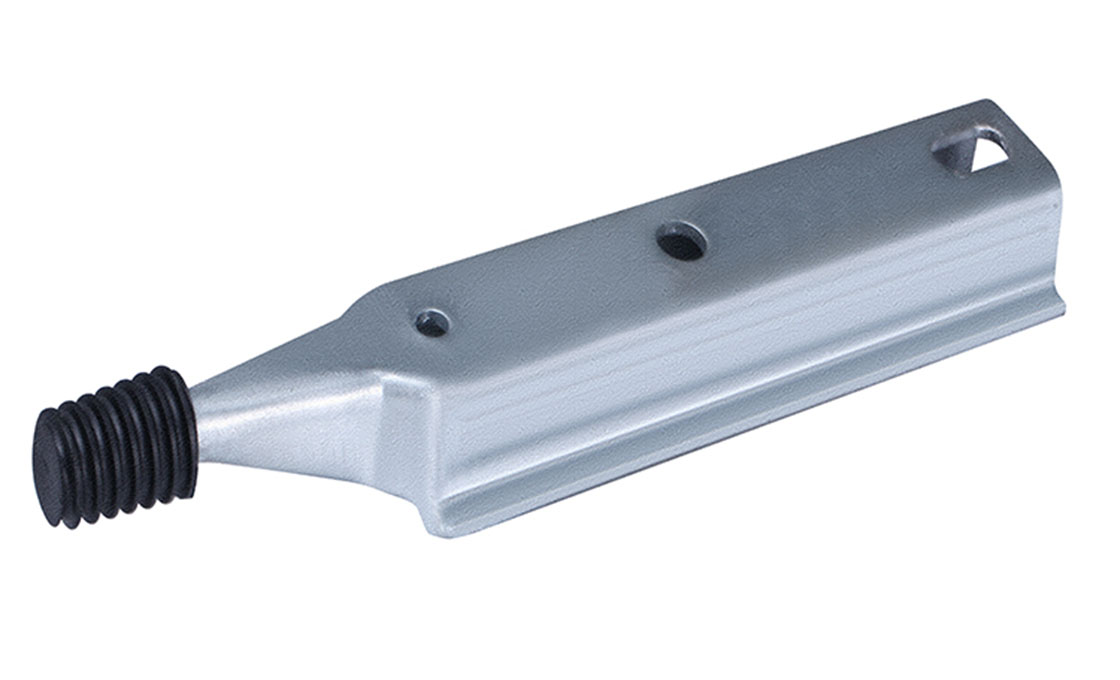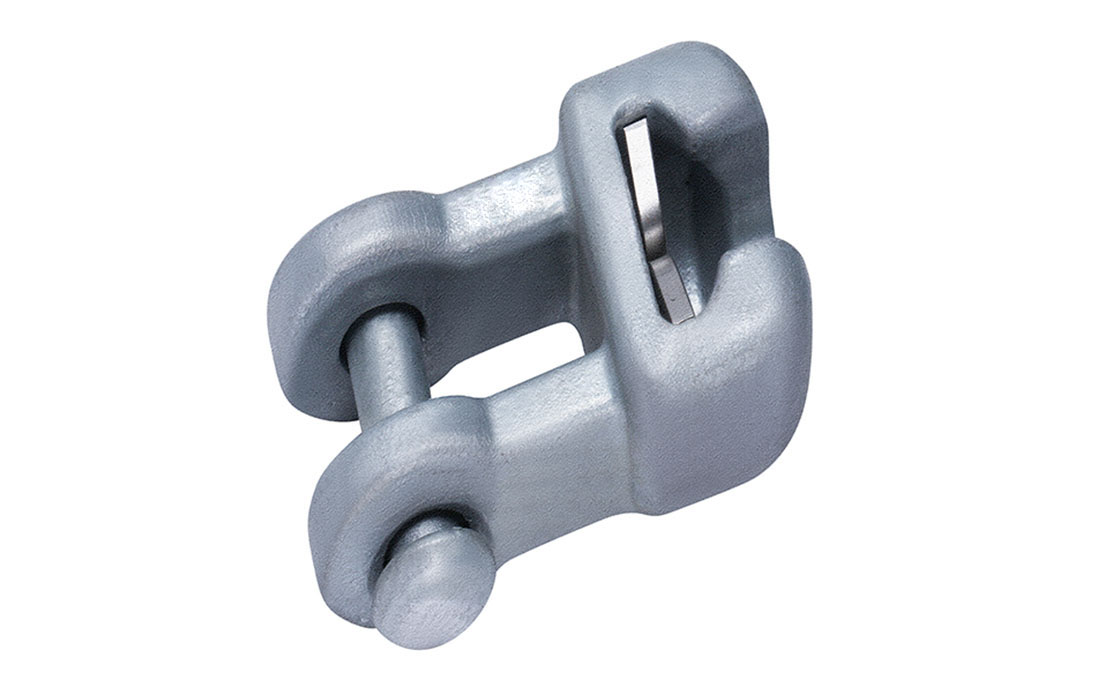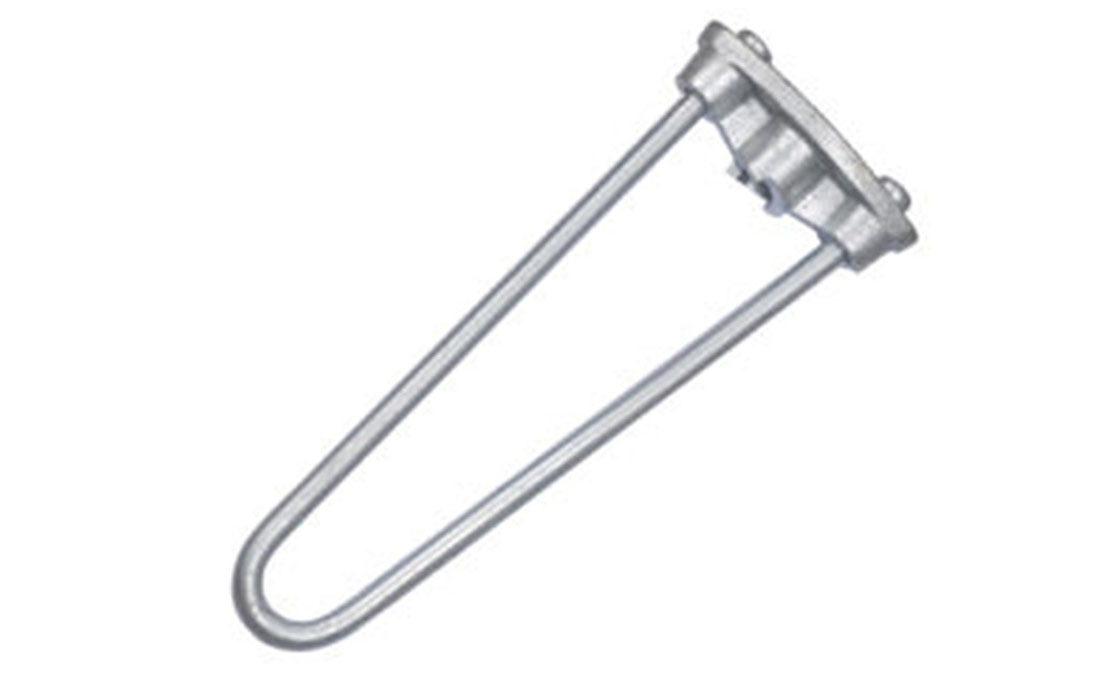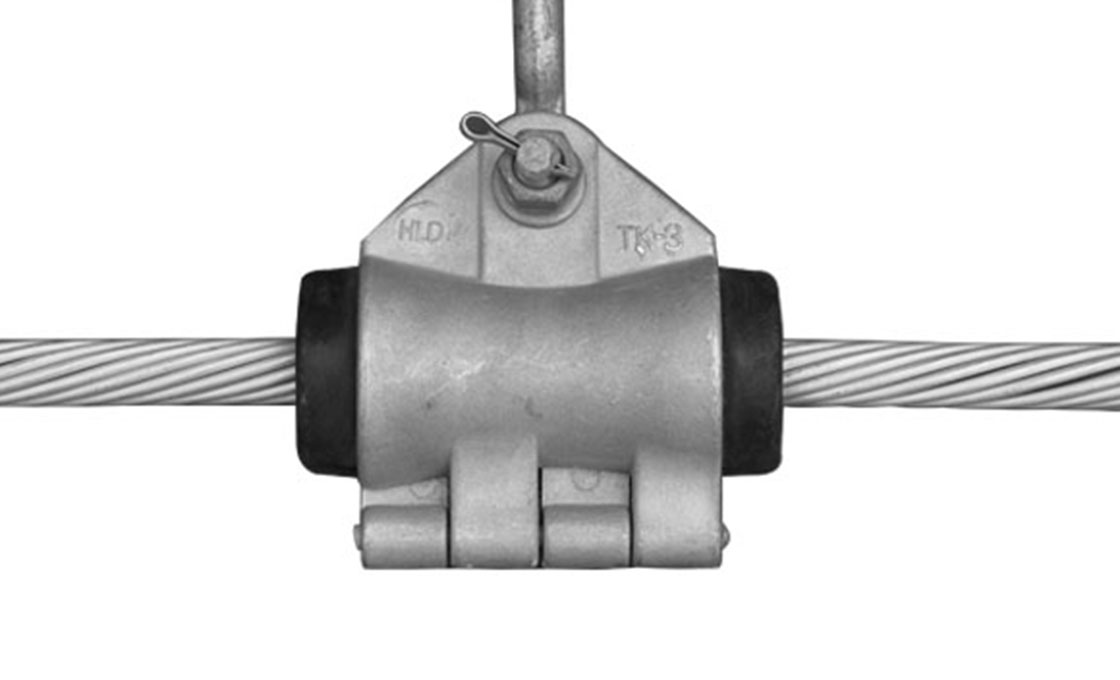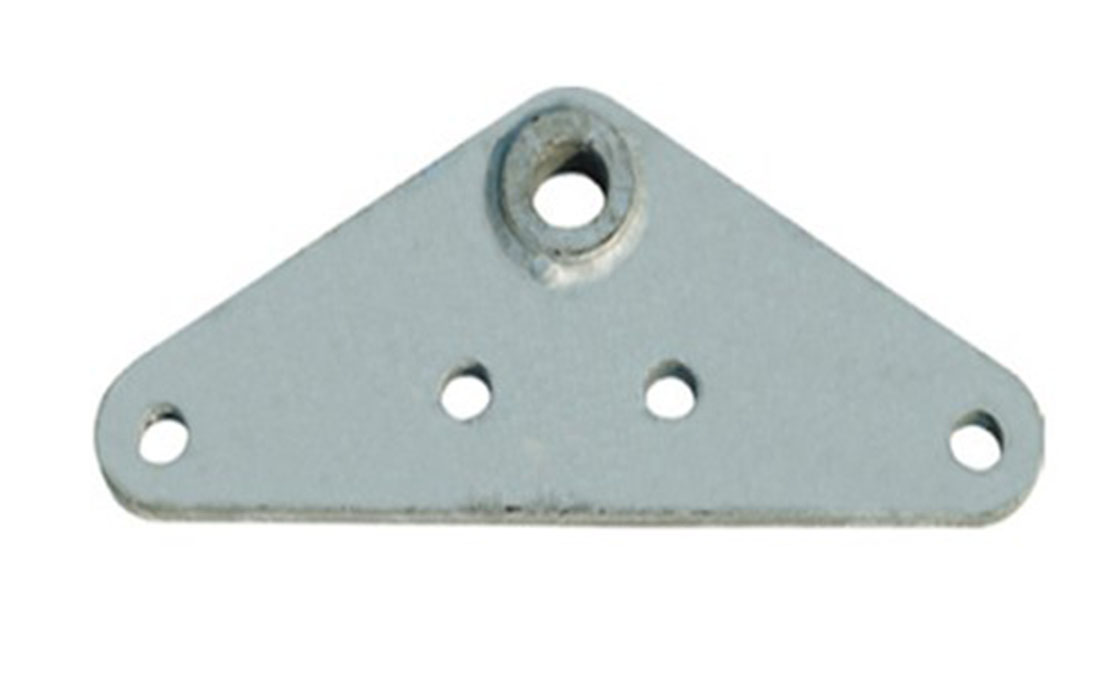Tension Clamp
Tension clamp is one type of single tension hardware that used for completing the tensional connection on a conductor or cable, and it provides mechanical support to the insulator and conductor. It is usually used with fitting like clevis and socket eye on the overhead transmission lines or distribution lines.
Bolted type tension clamp is also called dead end strain clamp or quadrant strain clamp.
Depending on the material, it can be divided into two series: NLL series tension clamp is made of aluminum alloy, while the NLD series is made of malleable iron.
NLL tension clamp can be classified by the conductor diameter, there are NLL-1, NLL-2, NLL-3, NLL-4, NLL-5 (the same for the NLD series).
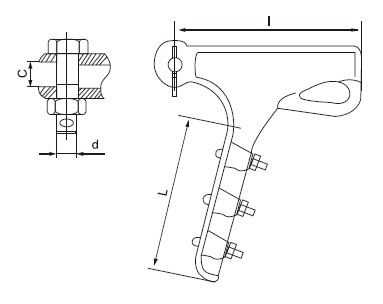
NLL Series Tension Clamps (made of aluminum alloy)
| Type | ApplicableConductor(mm) | Dimensions(mm) | Rated Failure Load(KN) | |||
| L | I | C | d | |||
| NLL-1 | 5.1-11.4 | 125 | 110 | 18 | 16 | 40 |
| NLL-2 | 11.4-16 | 175 | 186 | 20 | 16 | 40 |
| NLL-3 | 14.5-17.5 | 190 | 205 | 22 | 16 | 70 |
| NLL-4 | 18-22.4 | 300 | 285 | 30 | 18 | 90 |
| NLL-5 | 23-30 | 445 | 345 | 36 | 24 | 120 |
NLD Series Tension Clamps (made of malleable iron)
| Item No. | Diameter of Conductor(mm) | Dimensions(mm) | Bolt | Ultimate Strength(kn) | ||||
| D | C | L | I | No. | Dia(mm) | |||
| NLD-1 | 5.0-10.0 | 16 | 18 | 150 | 120 | 2 | 12 | 18 |
| NLD-2 | 10.1-14.0 | 16 | 18 | 205 | 130 | 3 | 12 | 41 |
| NLD-3 | 14.1-18.0 | 18 | 22 | 310 | 160 | 4 | 16 | 71 |
| NLD-4 | 18.1-23.0 | 18 | 25 | 410 | 220 | 5 | 16 | 91 |
Tension Clamp Complete Buying Guide
A typical pole line comprises of different fittings or hardware. One of the fittings that you may consider buying for your pole line is the tension clamp. It is a common feature on the power and telephone lines.
If you are planning to buy tension clamps and you would like to seek some clarifications, then you must gather all the information that you need about the product.
In this comprehensive guide, I am going to open up to you about everything that you should know about tension clamps for the overhead line. At the end of it, you will be in a perfect position to buy the best cable tension clamp.
What is a Tension Clamp?
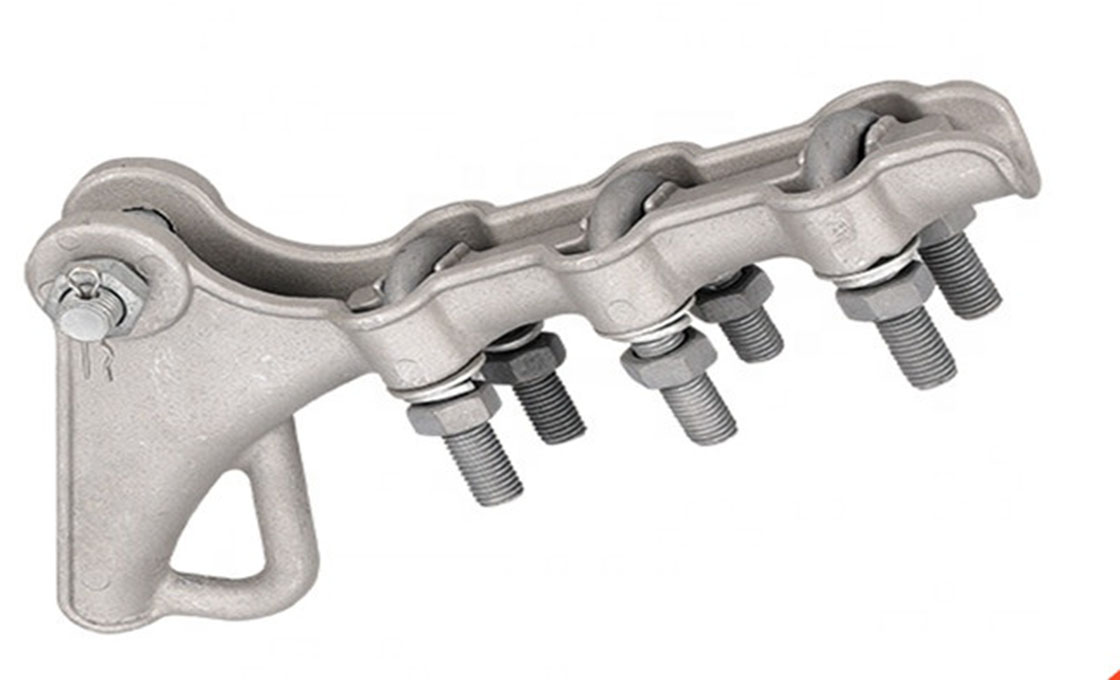
A tension clamp is a sturdy fitting that is used for completing the tensional connection on a conductor or cable. The fitting has different components that are connected to the cable a specific points.
As it completes the connection, tension clamp helps to provide mechanical support to the insulator and also around the conductor.
The design of a tension clamp ensures that it can easily fit at any point of the cable or conductor.
You can connect it at the straight point and even on the twisted sections of the conductor cable.
Apart from being physically strong, tension clamp is highly flexible. This is why it can support the twisted section up to 90 degrees.
What is the function of a Tension Clamp?
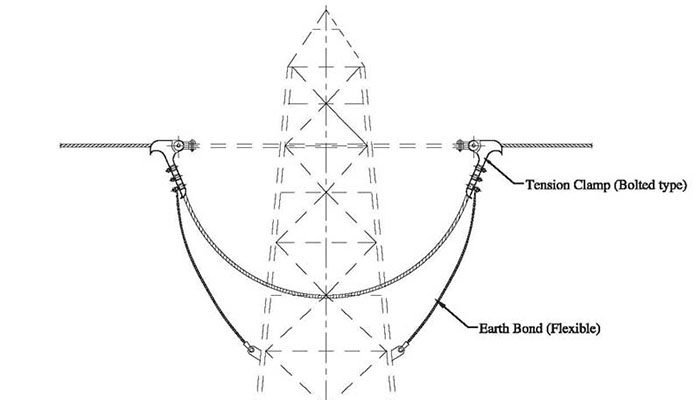
As we have just mentioned, a tension clamp is used for giving cables mechanical and electrical support.
To bring the matter into a clearer perspective, here are the key functions of tension clamp:
Providing mechanical connection
Under normal circumstances, cables for poles and telephone lines are subjected to different forms of mechanical forms They need to be adequately supported so that they can remain in their desired positions.
Tension clamp is designed to give the cables or conductors a strong mechanical and electrical connection.
The support that is given by the tension clamp shields the cable in all the conditions, whether it is the working load or the longitudinal forces that are acting against the conductor.
The longitudinal grip of the tension cable is also attributed to mechanical support.
Protect the cable/conductor
Tension cable is also good at playing a protective role.
The ergonomic design of this power line fitting ensures that the cable remains at the desired position at any given time.
This protection is usually important especially against the installation loads.
Restrict the movement of the conductor
Elements of weather such as wind and storm tend to cause unwarranted movements on the conductor. This is an addition to natural calamities such as tremors and turbulence among others.
Constant movements and vibrations of the conductors can disrupt the normal transmission of data and electric current.
Quality tension clamps are capable of limiting such movements by ensuring that the cable remains sturdy regardless of the external factors.
Types of Tension Clamps for Overhead Lines
Since there are different kinds of transmission lines, it is only necessary that the tension clamps are not all the same.
According to functionalities, there are two broad categories of tension clamps.
Tensioning Clamp
This type of tension clamp is designed to bear all the weight and tension that is on the conductor.
It has a high grip strength which is not less than 90% of the rated resistance of the conductor.
The bolted type and the wedge type fall under this category.
Tensile Clamp
This category of tension clamp plays two roles simultaneously. It takes the pulling force from the conductor while at the same time it acts as a conductor.
When used as a conductor, you should follow safety procedures when installing it on the pole line.
In terms of the design, tension clamps are divided into the following categories:
Wedge tension clamp
Wedge tension clamps are quite versatile as they are used in both overhead lines and as well as substations.
The design of this tension clamp comprises two forged bodies that are connected to each other by a hinge. This ends up forming a wedge-like structure.
They are designed to convert tension load into a compressive clamping load. When the tension load is increased, the longitudinal movement inside the shell makes the clamping force and strength increase.
This type of tension clamp can either be a single wedge or double wedge depending on the number of bodies that it has.
Cone tension clamp
Cone tension clamp has the same function as Wedge tension clamp, The only difference is that the connection force of cone type is due to the cones.
The connection is also strong and can work with or without jumper connectors.
Compression dead end clamp
High-temperature tension clamp
This type of tension clamp is specifically suitable for the areas that are prone to high temperature.
The material of the tension fitting is enhanced for such areas.
Parts of Tension Clamps
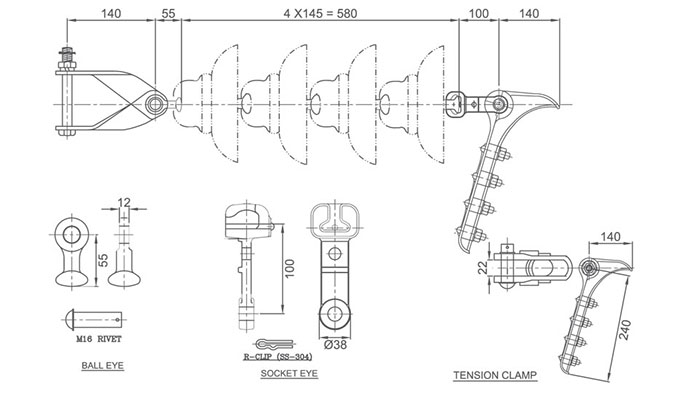
A bolted tension clamp comprises of different components which include:
The body: This is the main component of the tension clamp. It is the part on which the conductor is attached for support and connection. The body is combined with the wedge to maximize the area of connection or attachment with the cable.
Washers: The washers are positioned right next to the body of the tension clamp. The main purpose of the washer is to shield or protect the surface of the conductor when it is connected to the clamp.
Straps: The straps of a tension clamp are designed to transfer the load from the axis of oscillation to the insulator ring.
Threaded inserts: Also known as threaded bushings, these are fasteners that provide a point of fastening the conductor.
Bolts and nuts: How can you ensure that the connection between the cable and the tension clamp is strong? Bolts and nuts have the solution to this problem. They ensure that the cable is tightly connected to the tension clamp.
When buying tension clamp, ensure that all the above parts or components are intact. This is one way of ensuring that you have bought a genuine telecom tension clamp.
Materials for Tension Clamps
Before you buy and use tension clamp, you should confirm what it is made of. The material must be compatible with the conductor application. This property is vital as it will determine how strong the tension clamp fastening fitting is.
Our tension clamps are made of high-grade aluminum and cast iron materials.
The most attractive feature of these materials is their strength and electrical conductivity.
They are physically strong while at the same time compatible with different conductors.
Aluminum is also capable of functioning well under different conditions without degrading or getting damaged. It can withstand extreme temperature ranges.
Alloys of aluminum can also be used as long as they meet the technical requirements of the tension clamp.
The surface treatment of this fitting is hot-dip galvanizing. According to the corrosive environment, the zinc layer thickness should be adjusted within a certain range.
Design Feature of Tension Clamps

The design, shape and dimension of the tension clamps for the overhead line will determine its usability and how it will be connected to other components on the pole line.
The tension fitting design should be in such a way that it allows the fitting to move freely along the conductor.
The design of the tension clamp fastening should also minimize the load and fatigue on the cable.
The dimension of the tension clamp fastening entail parameters such as length, width and thickness. It should be accurate and match the pole requirement.
Connecting the tension clamp to the pole line should be an easy task thanks to the excellent design and dimension.
Conclusion
With this comprehensive information, I hope that you can now make a solid decision with regards to buying wire tension clamp hardware fitting.
As a reliable tension clamp manufacturer in China, we will always be available to offer you the best.
We have a stock of quality tension clamp hardware for the power line.
Frequently Asked Questions
What is a tension clamp?
Tension clamp is one type of single tension hardware that used for completing the tensional connection on a conductor or cable, and it provides mechanical support to the insulator and conductor.
What is the function of tension clamps?
Tension clamp is designed to support the cables or conductors:
- Providing mechanical connection
- Protect the cable/conductor
- Restrict the movement of the conductor
What are the types of tension clamps for overhead lines?
According to the design, tension clamps are divided into the following categories:
- Wedge type tension clamp
- Cone tension clamp
- Compression dead end clamp
- Bolted type tension clamp
What should I look into when choosing tension clamps?
Essential features of tension clamps include:
- Designs
- Materials
- Dimensions
- Quality Compliance and standards
